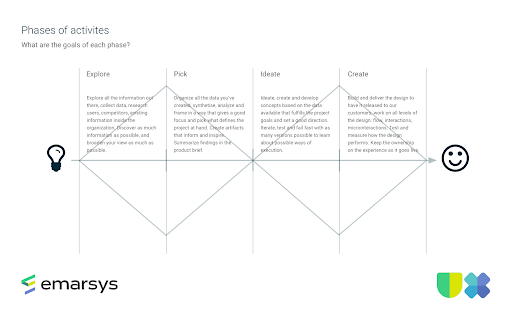Establishing a UX process for transparent design strategy
As I led the newly formed UX team at Emarsys, I quickly identified a critical challenge: without a shared process, our designers were spending too much time on refining solutions and too little on research. This led to late-stage changes and a lack of clarity on when to apply the right methods. My goal was to provide a framework that would empower the team to work more strategically and effectively, while making our approach transparent to our partners.

To address this, I introduced a common UX process based on Design Council’s Double Diamond model. I led the team in adapting it to fit our specific needs, ensuring it provided a flexible approach rather than a rigid set of rules.

A key part of this new process was requiring a design brief to be created in the middle. This single artifact served as a bridge, forcing us to summarize our research and formally define the problem before jumping into solutions. This approach was crucial to making better product decisions with discovery and provided a clear framework for how we’d work as a team.

The results were clear: the process organized our activities and proved scalable for any project size. The design brief became a particularly powerful tool, giving our designers clear, focused goals, and communicating design goals t our partners. This experience taught me that creating a flexible process is essential to building a high-performing design team that fits the organization, and makes collaboration transparent to partners.
